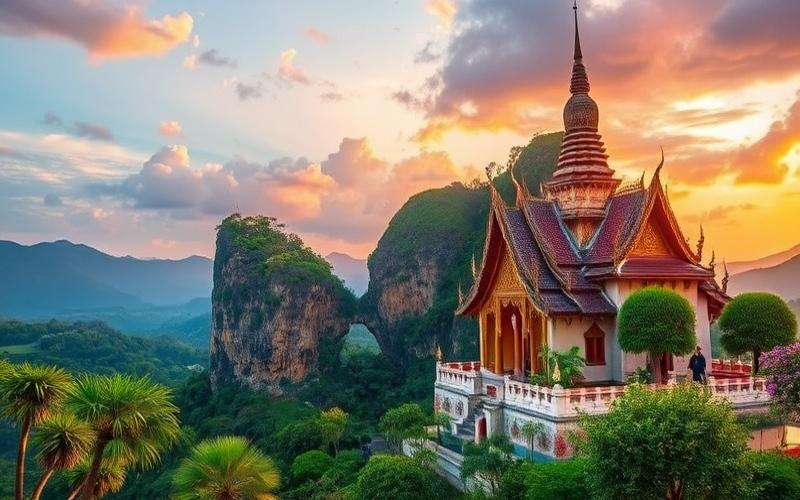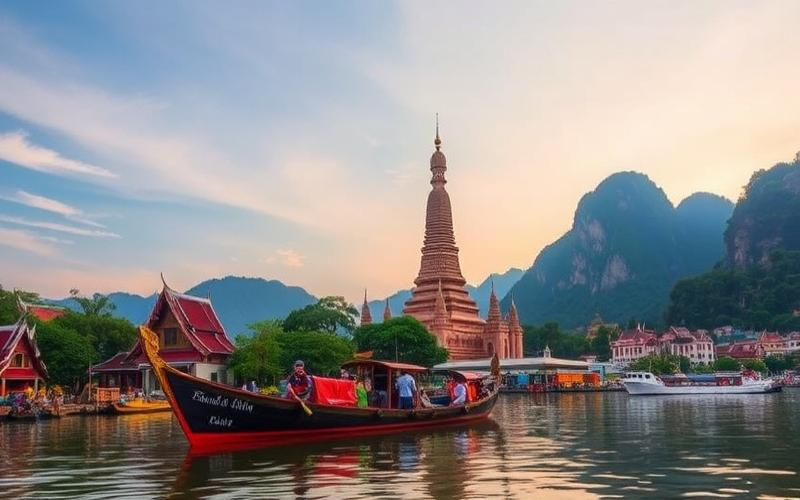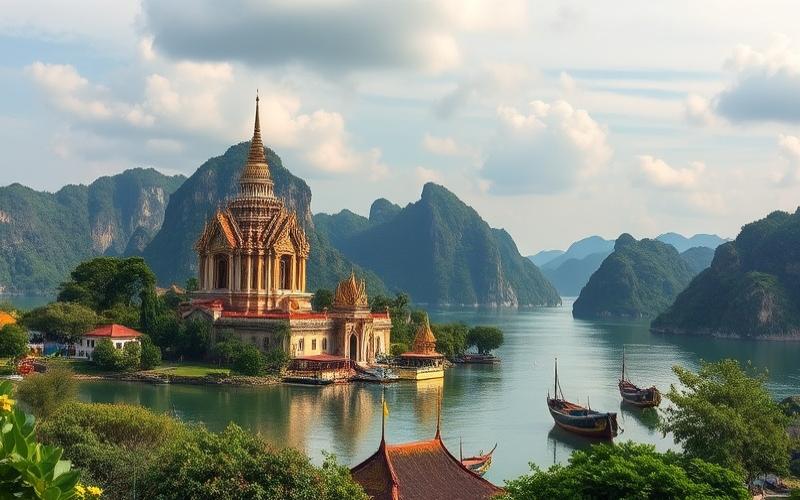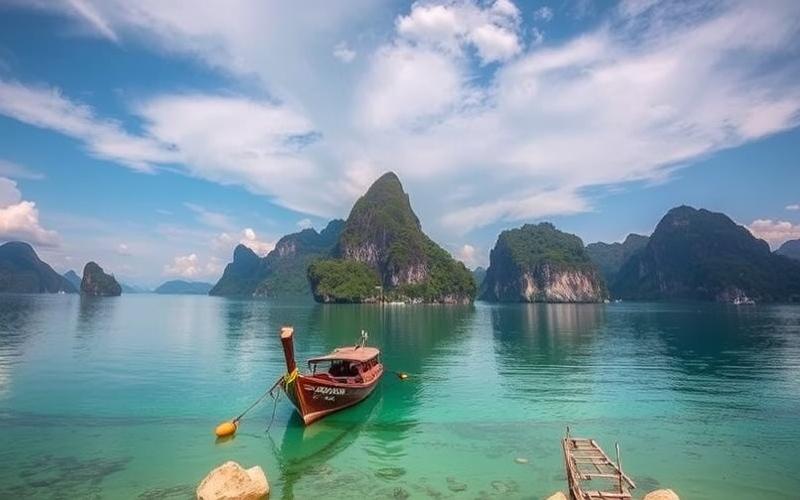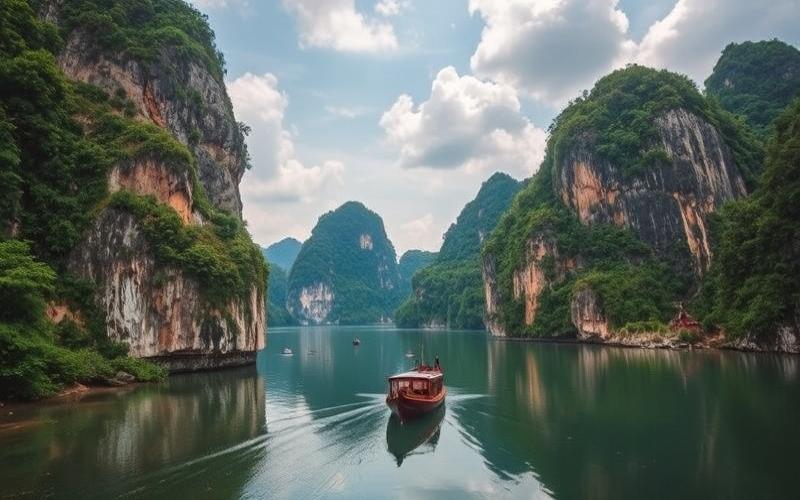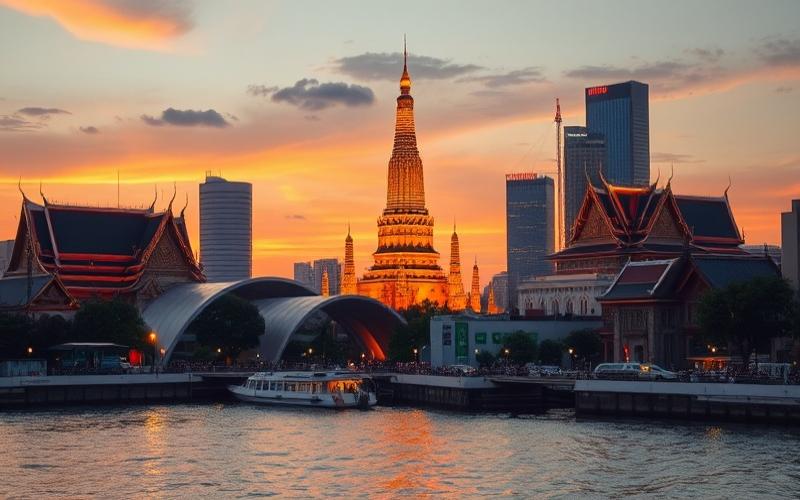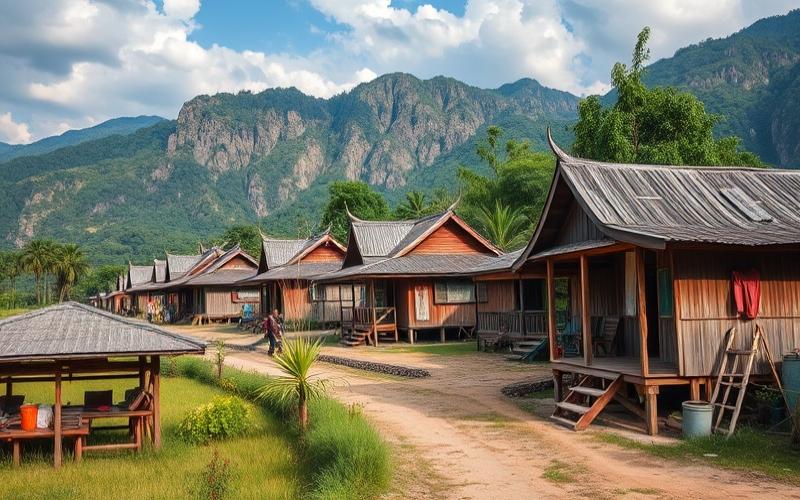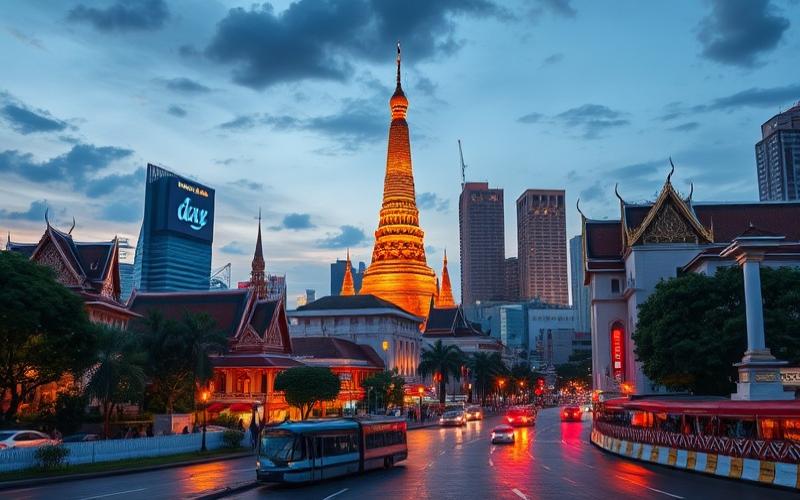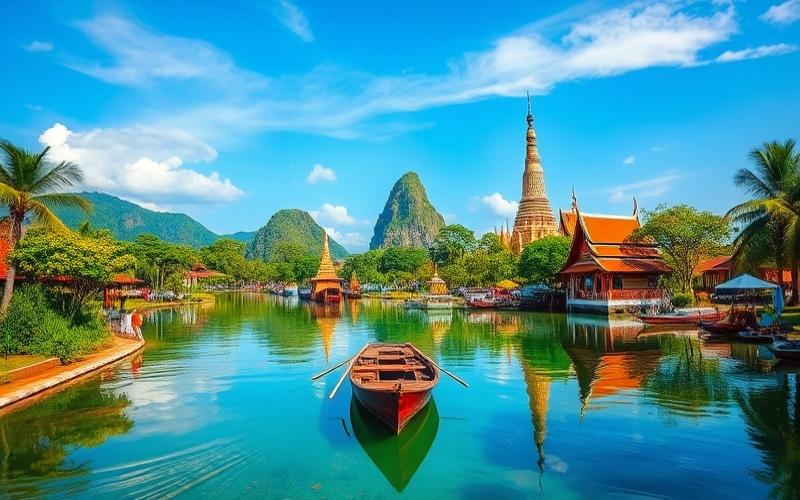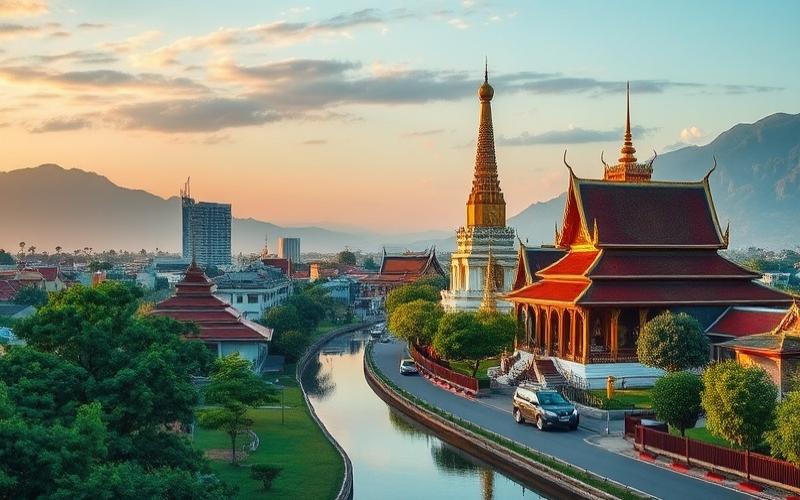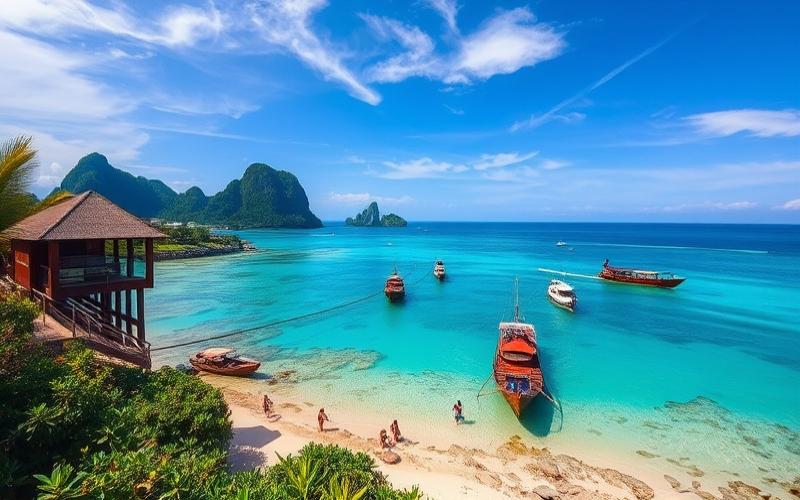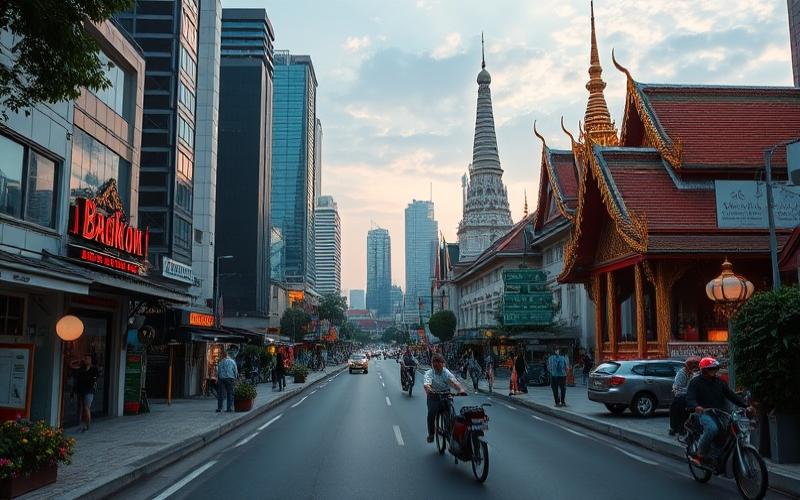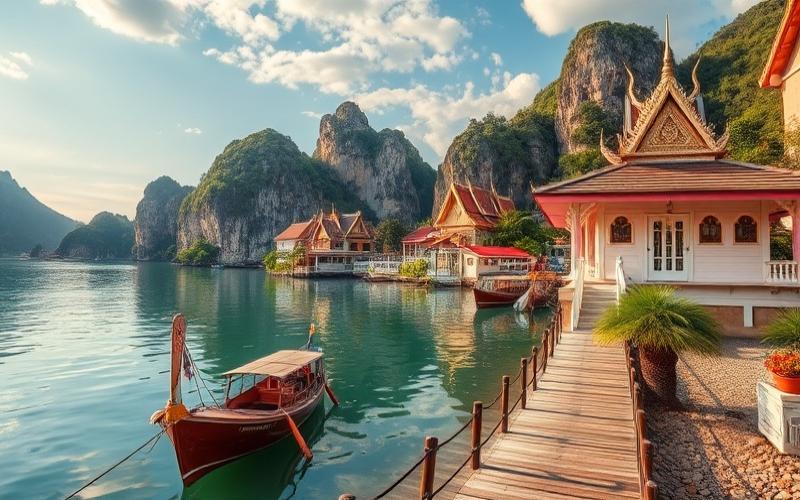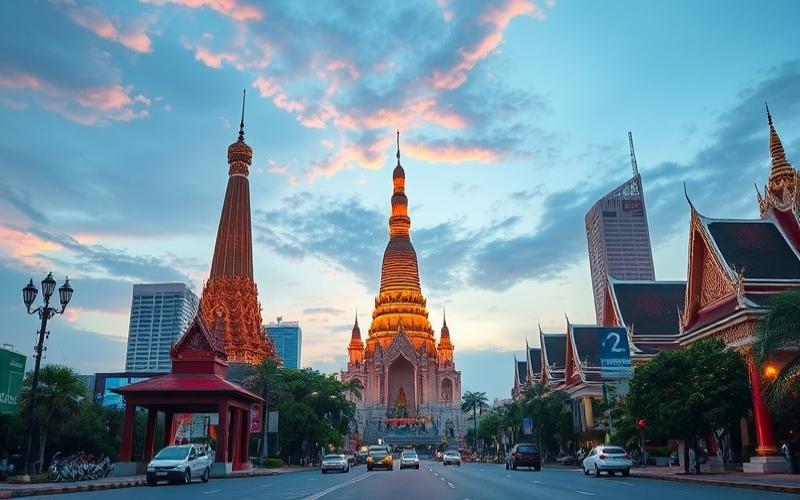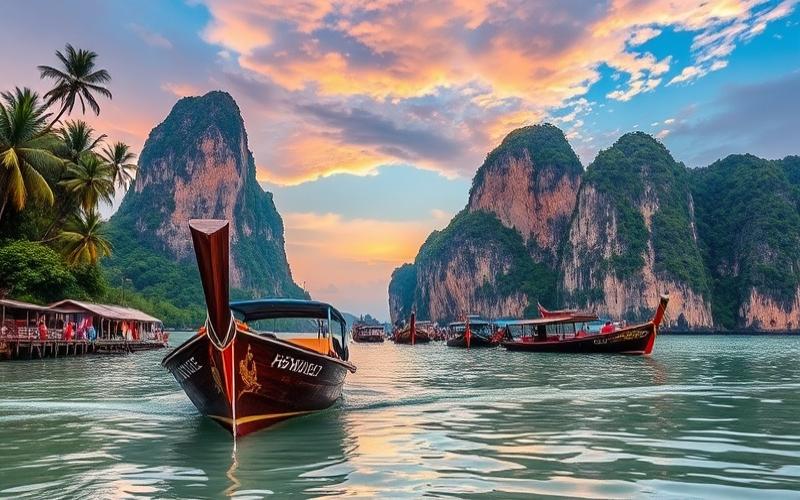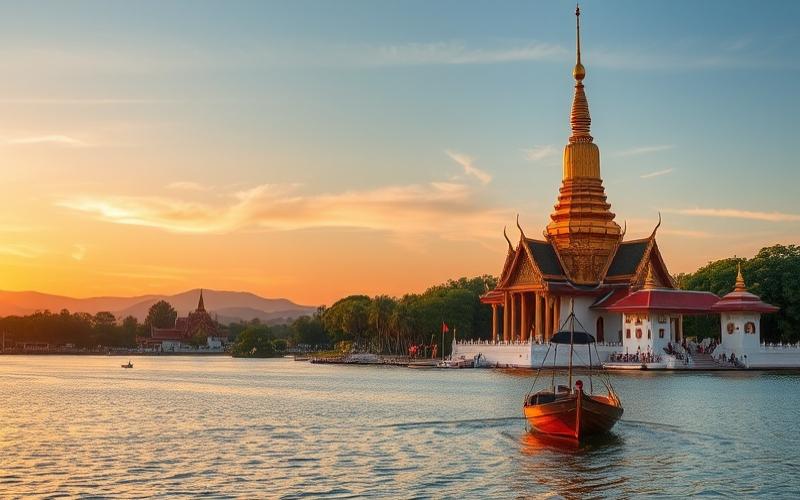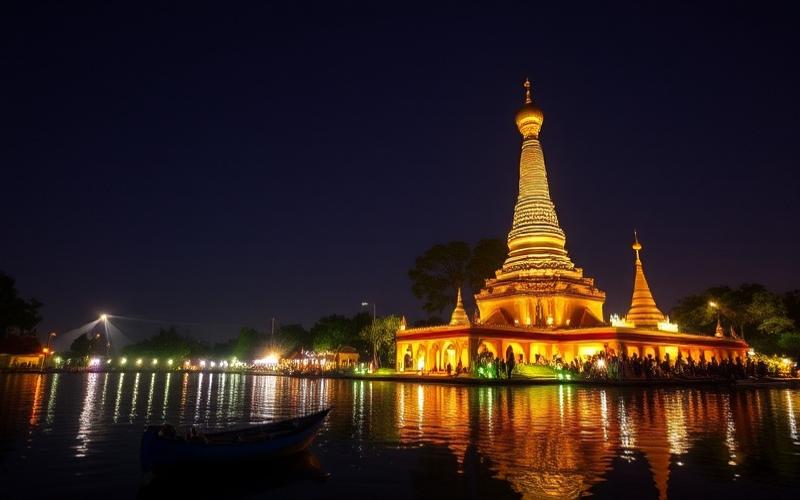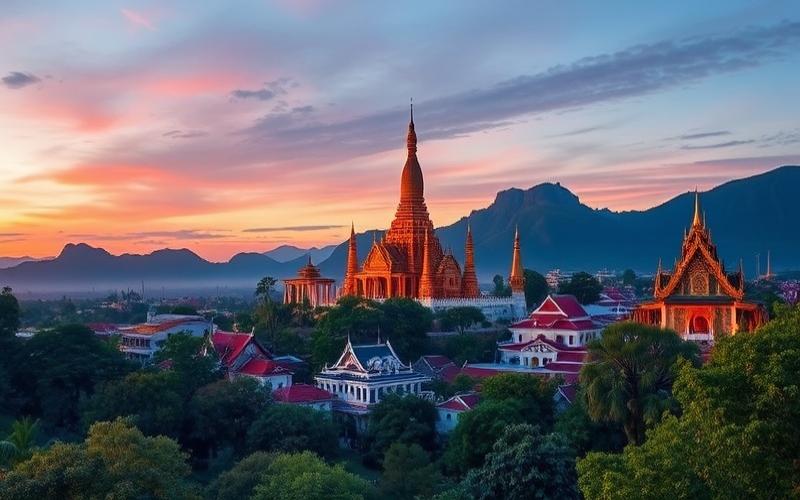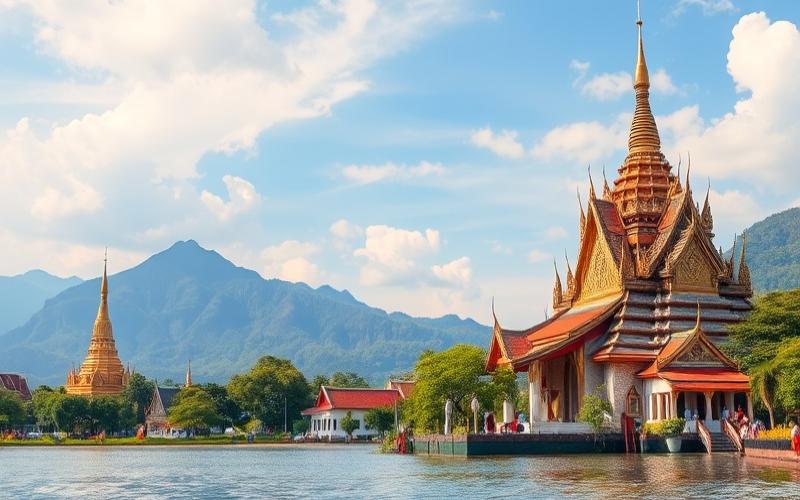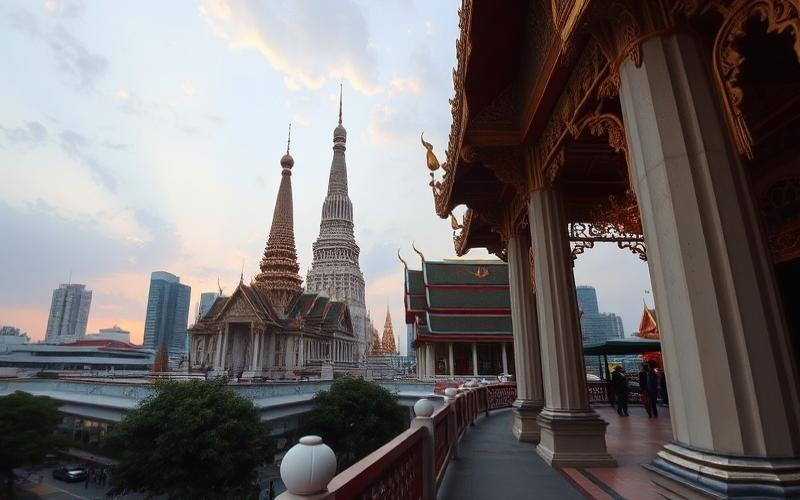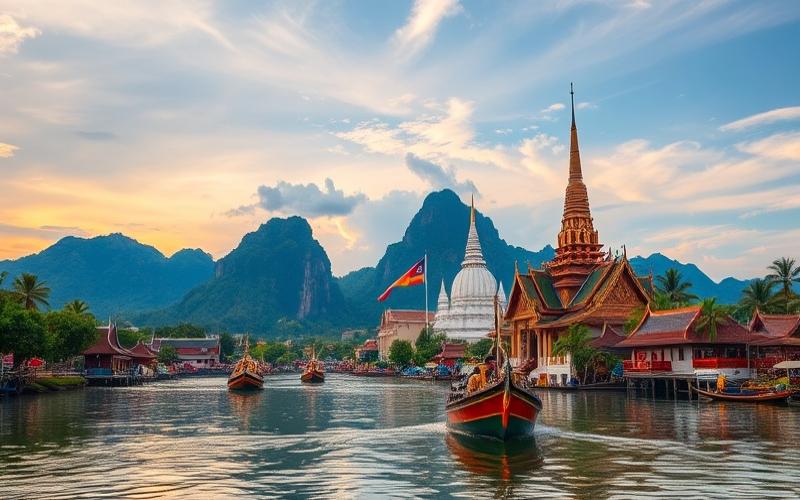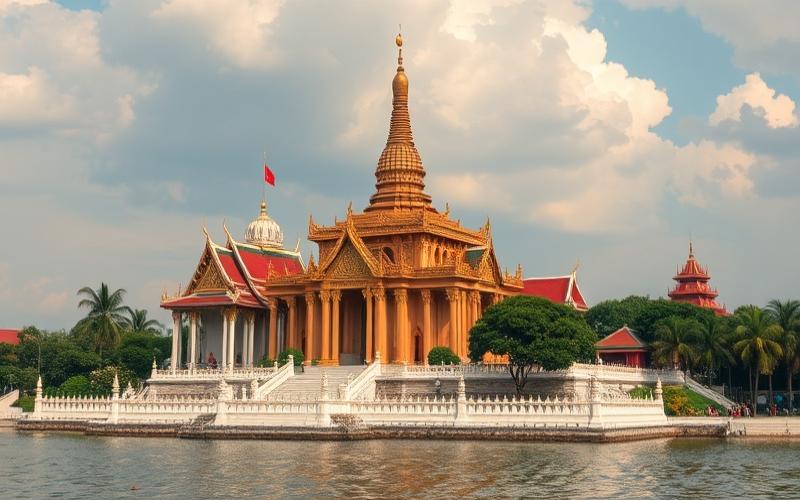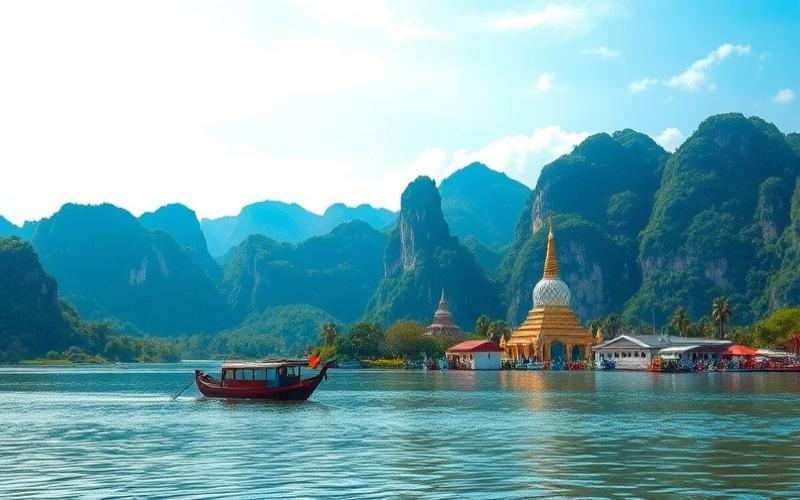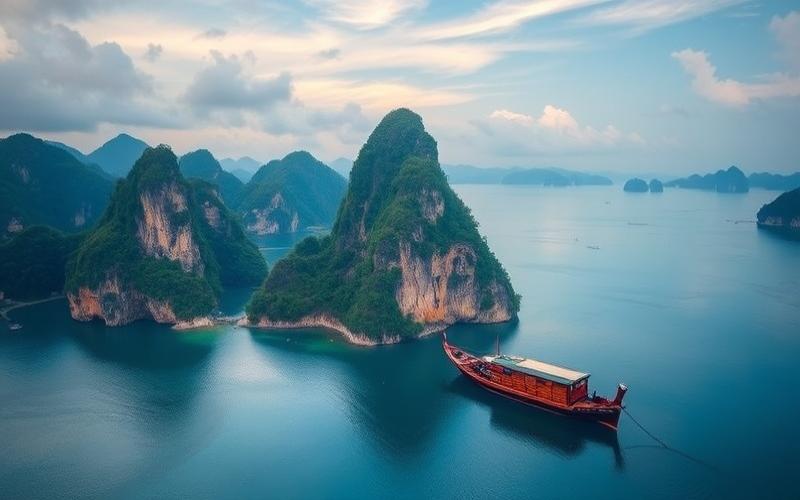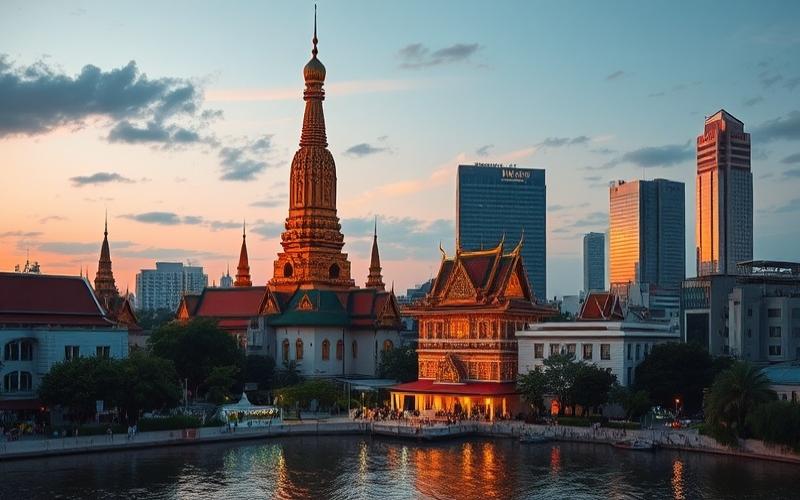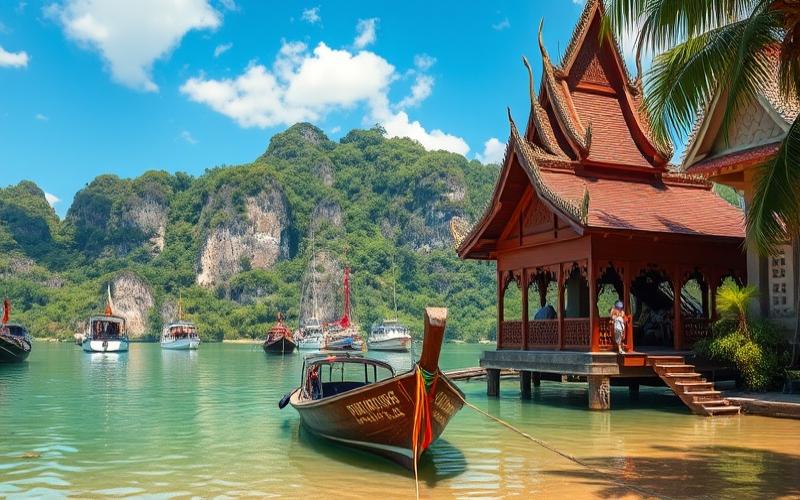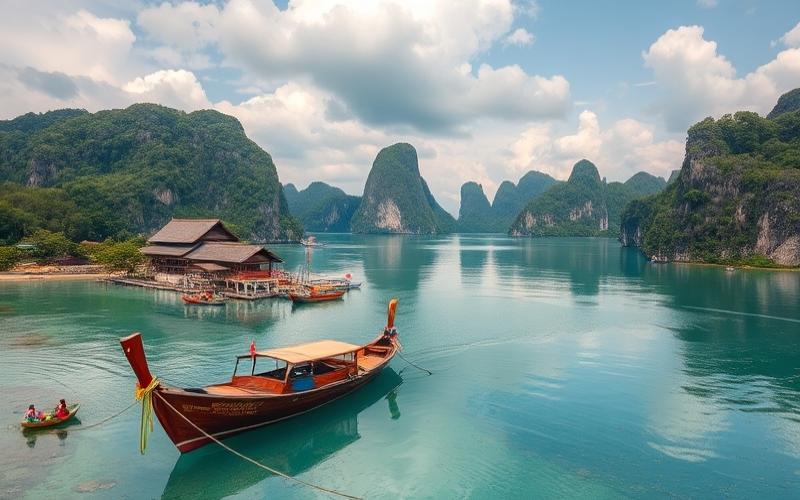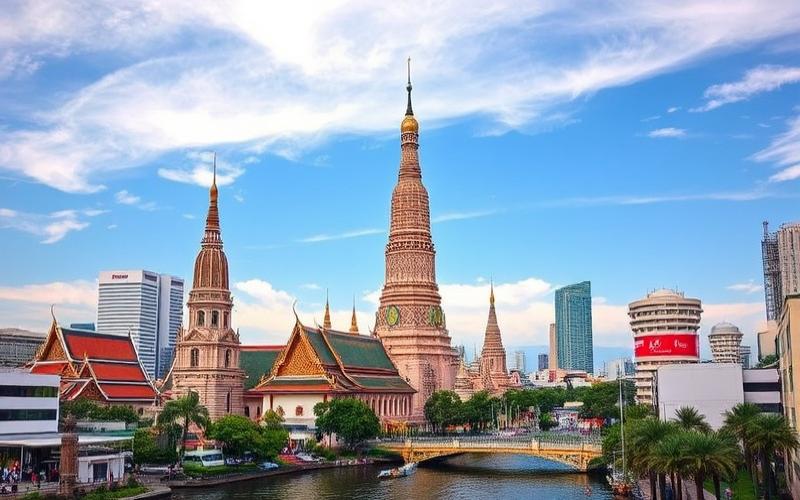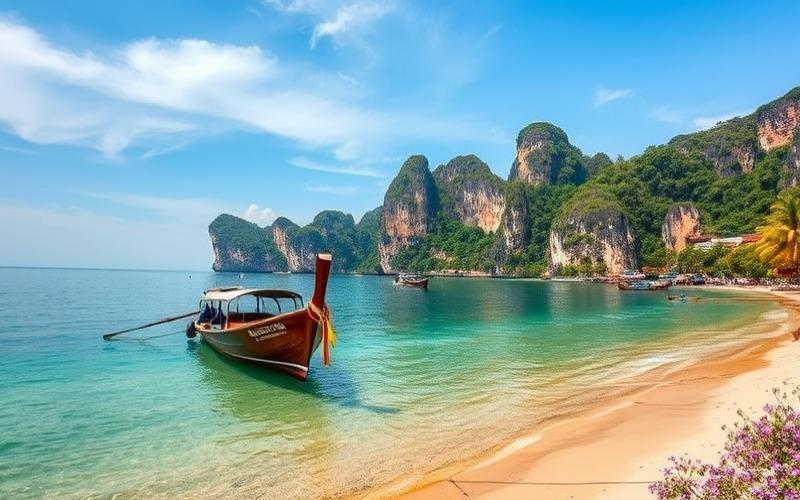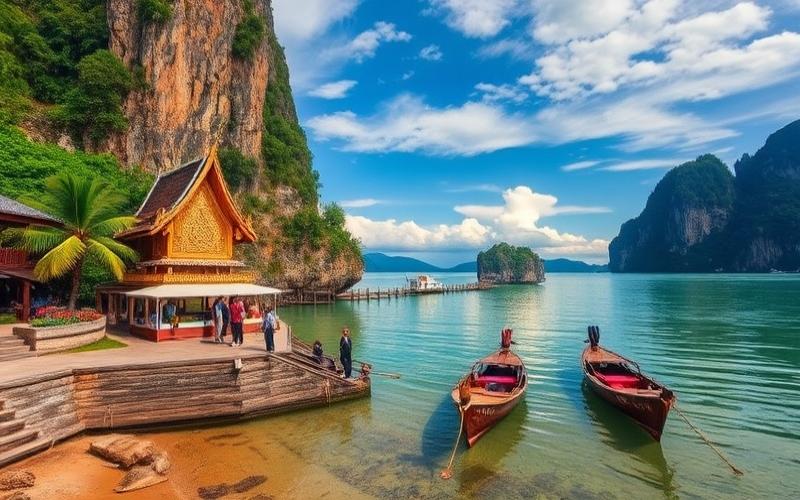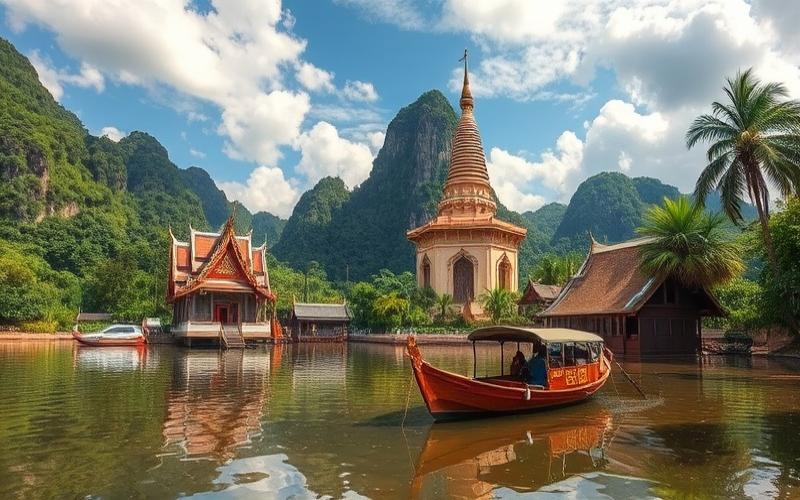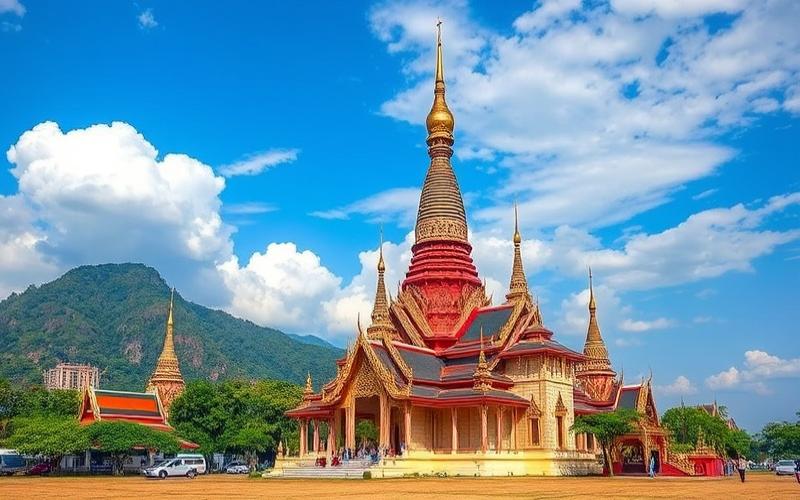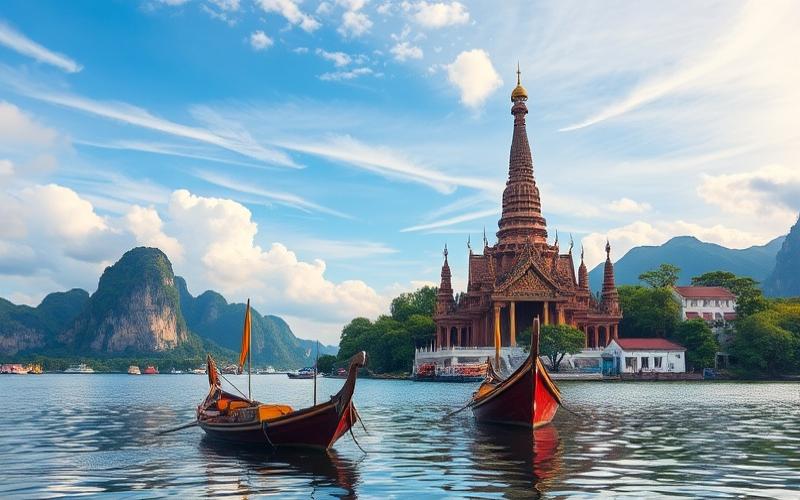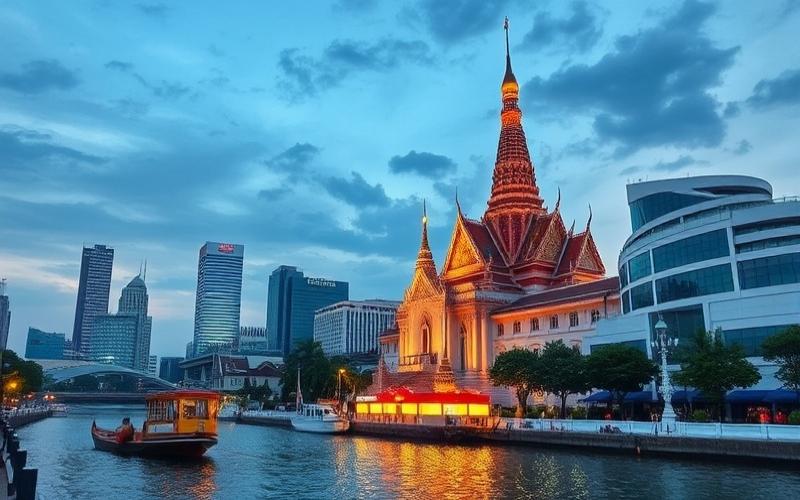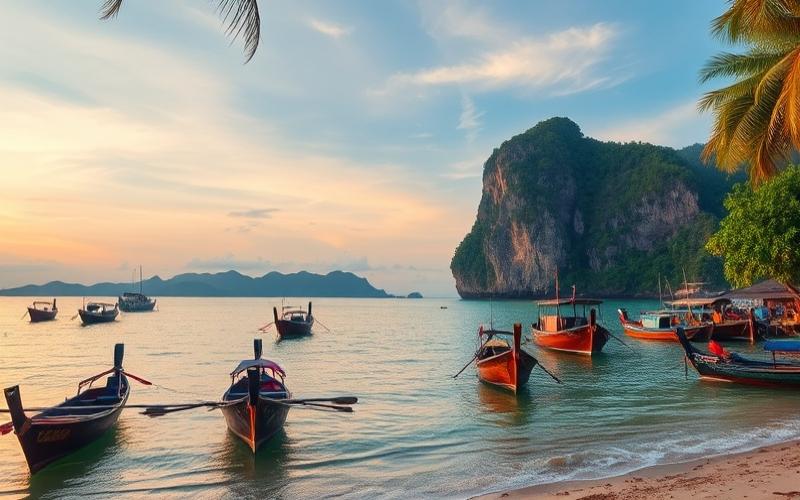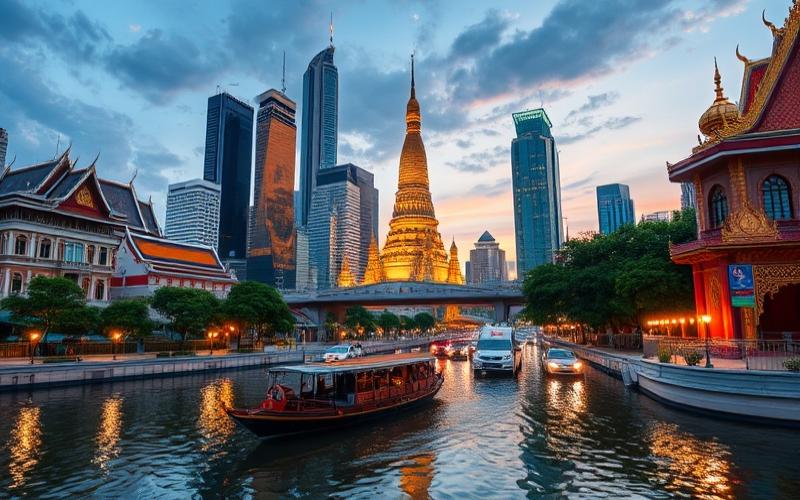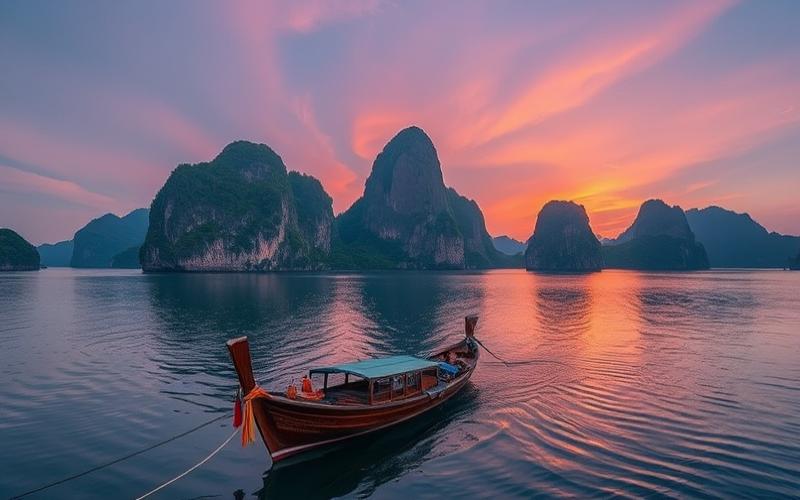
 Published on and written by Cyril Jarnias
Published on and written by Cyril Jarnias
In a world where the quest for authenticity is gaining importance, investing in Thailand’s authentic villages represents an exceptionally rich opportunity for enthusiasts of cultural heritage and economic potential. Amid rapid urbanization, these villages offer an appealing alternative, combining tradition and innovation, and present growing appeal for players in the real estate and niche tourism sectors.
With promising growth forecasts by 2025, Thailand is positioning itself as fertile ground for those wishing to combine profitability and heritage conservation, while meeting a sharply rising international demand for immersive and sustainable travel experiences.
Thailand’s Rural Regions: An Underestimated Potential for Investors
Analysis of Natural Resources and Agricultural Opportunities in Rural Thailand
Thailand possesses diverse natural resources, including fertile land, abundant water, and remarkable biodiversity. The main agricultural opportunities for investors include:
- Rice Cultivation: The central plain is the country’s “rice bowl” with 90% of producers growing rice.
- Cash Crops: Natural rubber (world’s leading exporter), cassava, coconut (nearly 2 million hectares), sugarcane, tropical fruits, and horticulture.
- Agroforestry: Forest village systems enabling integrated cultivation between trees and vegetable products (cabbage, carrot, potato).
- Diversification encouraged by authorities to penetrate more lucrative markets.
Potential Impact of Infrastructure
Infrastructure projects play a key role in rural attractiveness:
- Roads: Improving the road network facilitates access to national and international markets for farmers and agribusinesses.
- Telecommunications: Digital development allows rapid dissemination of information on prices, innovative farming techniques, and access to trading platforms.
These infrastructures significantly reduce logistical costs while stimulating local product processing.
Tax Incentives & Favorable Government Policies
Incentive measures include:
- Specific tax reductions for certain agro-industrial investments or local agricultural processing.
- Active policies aimed at supporting agricultural diversification among smallholders.
- Government programs encouraging:
- Facilitated access to rural credit
- Technical support
- Vocational training
A notable example is the gradual integration of rural development into the national political agenda to sustainably improve local living standards.
| Resource / Opportunity | Main Region | Economic Potential |
|---|---|---|
| Rice | Central Plain | Massive export |
| Rubber | South | World No.1 |
| Cassava | Northeast | Processing |
| Coconut | South / Central | Agri-food |
Case Studies – Successful Examples
Some inspiring examples include:
- Development of the forest village system allowing rural families not only a stable income but also a bonus linked to their commitment over several years.
“If a family works actively for three consecutive years on an area of at least 30 rai (4.8 hectares), they earn a bonus…”
- Emergence of large Thai agribusiness companies thanks to public support targeted towards agricultural processing.
Cultural & Social Considerations
Respectful investment must integrate:
Deep respect for local community values, such as:
- Village cooperation
- Traditional farming practices adapted to the local climate
- Importance placed on rural festivals
Recommended strategies:
- Engage in dialogue with local leaders
- Value ancestral know-how in the invested project
This cultural context is a major asset for creating an environment favorable to social acceptance.
Potential Challenges & Sustainable Solutions
Main identified obstacles:
- Land tenure insecurity limiting certain structured agricultural investments
- Accelerated aging of the rural population restricting agricultural generational renewal
- Increased climate vulnerability
Recommended solutions:
Adopt sustainable practices such as:
- Rational water resource management
- Agroforestry preserving local biodiversity
- Continuous training focused on green innovation
Therefore, investing in rural Thailand requires strategic caution but offers exceptional potential if these challenges are considered from the start.
Good to Know:
Thailand’s rural regions offer considerable potential for investors, thanks to their abundant natural resources and agricultural opportunities, such as rice, sugarcane, and tropical fruit cultivation. Improved infrastructure, like roads and telecommunications, opens new market access pathways, making investments more attractive. The Thai government supports these initiatives with dedicated tax and policy incentives, encouraging local economic development. Previous successes, such as sustainable agriculture projects using cooperatives, illustrate possible economic and social benefits. Integrating the rich cultural heritage of these regions into investment strategies can ensure respectful and community-enriching development. However, it is crucial to manage environmental challenges by adopting sustainable practices to preserve these fragile ecosystems.
Rural Real Estate Investment: A Profitable Opportunity in Thailand
Rural real estate investment in Thailand presents unique characteristics, driven by the authenticity of Thai villages and a growing enthusiasm for sustainable tourism and immersive local experiences.
Distinctive Features and Growth Perspectives:
- Rural villages offer an authentic immersion into Thai culture, with traditional architecture, a peaceful pace of life, and preserved landscapes.
- Tourist demand is shifting towards longer stays in natural or historical environments, away from urban hustle.
- Certain regions stand out for their potential:
- Chiang Mai & Chiang Rai (North): renowned for their mountainous landscapes, local crafts, and traditional festivals.
- Isan (Northeast): less saturated, it attracts travelers seeking a deep cultural experience at a low entry cost.
- Kanchanaburi & Sukhothai (West-Central & North-Central): UNESCO World Heritage sites offering lasting heritage appeal.
Economic Factors Favoring Profitability:
The average price per square meter in the countryside remains very attractive: approximately €1,700/m², compared to €3,000/m² in the city, making access to the rural market significantly more affordable.
Annual rental yields generally reach between 4.5% and 7%, potentially exceeding this threshold with professional management focused on alternative tourism or seasonal rentals targeting foreigners.
National economic growth remains robust. By 2025, the World Bank forecasts a +3.5% increase in public investment driven by rural infrastructure.
| Criterion | Rural Real Estate | Urban Real Estate |
| Purchase Price | Low (~€1,700/m²) | High (~€3,000/m²) |
| Rental Yield | Up to >7% | Often <5% |
Concrete Examples of Success:
Eco-tourism Village near Chiang Mai
An investor transformed several renovated traditional houses into eco-friendly tourist accommodations with integrated craft workshops — average annual occupancy rate over 80%, net yield exceeding 8%.
Farm-Stay in Isan
Project supported by the local community via regional subsidies; offering combining rustic accommodation and participatory farming activities — loyal foreign clientele seeking authenticity off the beaten path.
Key takeaway: investing in rural Thailand relies on a dual engine — low costs/new demand growth — while requiring analytical rigor in the face of structural risks specific to emerging markets outside metropolitan areas.
Good to Know:
Investing in rural real estate in Thailand offers a lucrative opportunity thanks to the unique characteristics of authentic villages, such as those in Chiang Mai and Pai, where sustainable tourism and interest in immersive experiences are increasing. The 15% rise in sustainable tourism in 2023 highlights this trend, making these investments potentially profitable with rural land purchase costs up to 40% lower than urban areas. Local support initiatives, such as subsidies for renovating traditional houses, favor this market. For example, an investor who acquired a property in Mae Hong Son in 2022 recorded an 18% return on investment through authentic tourist stays. However, it is crucial to consider risks related to limited infrastructure and access to services, adopting a mitigation strategy through local partnerships and investment diversification.
Preserving Authenticity and Heritage in Thai Villages
Preserving authenticity and heritage in Thai villages is of crucial importance for transmitting cultural traditions, enhancing historical built heritage, and the sustainable development of rural communities. Maintaining these elements helps strengthen local identity, stimulate the economy through cultural tourism, and create responsible investment opportunities.
Importance of Preservation
- Maintaining Cultural Traditions:
- Craft practices, local festivals, and traditional lifestyles are essential for preserving collective memory.
- These traditions create authentic appeal for visitors seeking an immersive experience.
- Conservation of Architectural Heritage:
- Wooden structures, ancient temples (wats), stilt houses, or traditional markets testify to unique craftsmanship.
- Architectural preservation avoids urban homogenization linked to rapid modernization.
Contribution to Tourism and Local Economy
- Increased Tourist Attractiveness:
- Villages that have retained their traditional character attract respectful tourism, generating stable income without overexploiting natural resources.
- Positive Economic Effects:
- Job creation in the hospitality sector (local guides, family accommodations).
- Development of ancillary activities like crafts or traditional dining.
| Heritage Asset | Impact on Tourism | Local Economic Benefits |
|---|---|---|
| Vernacular Architecture | Extended Stay | Increased Average Spending |
| Traditional Festivals/Celebrations | Extended Tourist Season | Job Diversification |
| Local Crafts | Value through Souvenirs | Support for Small Producers |
Major Challenges Encountered
- Modernization:
- Rapid introduction of modern infrastructure that can distort the village landscape.
- Urbanization:
- Uncontrolled urban expansion threatening agricultural land and historical buildings.
- Loss of Know-How:
- Growing disinterest of younger generations in traditional trades due to urban opportunities.
Successful Initiatives & Government Policies
Non-exhaustive list:
- University programs involving researchers, NGOs, and royal foundations to integrate rural inhabitants into heritage planning (e.g., projects led by Kasetsart University around Sakon Nakhon).
- International support via UN-Habitat to promote sustainable urban planning aligned with Sustainable Development Goals (SDGs), integrating heritage preservation into their strategic recommendations.
Concrete examples:
| Village/Project | Preserved Heritage Specificity |
|---|---|
| Ban Chiang | Conservation of UNESCO archaeological site; museums |
| Mae Kampong | Wooden architecture; ecotourism promotion |
| Sakon Nakhon | Supervised renovation by university & authorities |
Preservation-Focused Investment Opportunities
- Eco-responsible rehabilitation of old dwellings transformed into guesthouses or living museums.
- Crowdfunding for educational programs aimed at transmitting ancestral know-how.
Long-term advantages:
- For Local Communities
- Strengthening of social fabric
- Identity valorization
- Stable diversified income
- For Investors
- Positive image associated with responsible tourism
- High yield potential through premium positioning based on authenticity
Active heritage safeguarding is an essential lever for combining sustainable tourist attractiveness, local economic prosperity, and social cohesion in Thai villages.
Good to Know:
Preserving the authenticity and heritage of Thai villages is essential to maintaining their tourist appeal, enriching the local economy through an influx of visitors curious to discover cultural traditions and ancient architectural structures. However, modernization and urbanization pose challenges, requiring a balance between progress and preservation. Government policies such as the Thai Local Wisdom Village initiative and successful community projects, like in Ban Chiang, a UNESCO World Heritage site, demonstrate the feasibility of this balance. Investing in preservation projects offers lucrative and sustainable opportunities, ensuring both the protection of cultural identity and a solid return on investment for investors and benefits for local communities, while encouraging responsible and sustainable tourism.
Disclaimer: The information provided on this website is for informational purposes only and does not constitute financial, legal, or professional advice. We encourage you to consult qualified experts before making any investment, real estate, or expatriation decisions. Although we strive to maintain up-to-date and accurate information, we do not guarantee the completeness, accuracy, or timeliness of the proposed content. As investment and expatriation involve risks, we disclaim any liability for potential losses or damages arising from the use of this site. Your use of this site confirms your acceptance of these terms and your understanding of the associated risks.

